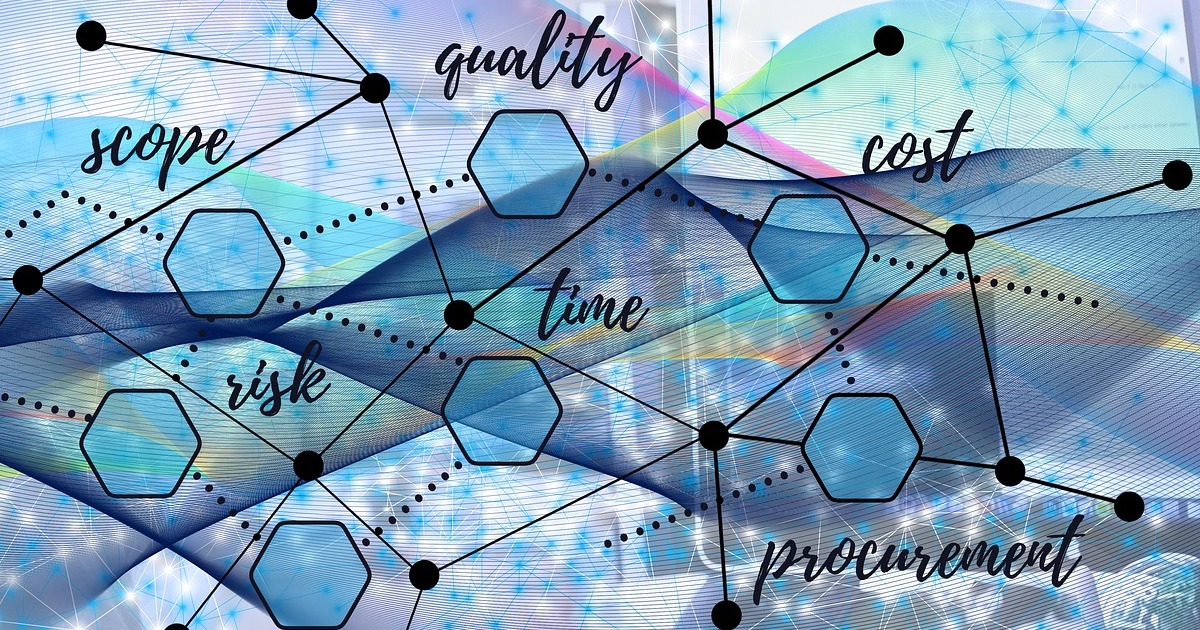The field of Artificial Intelligence (AI) is expanding rapidly with a multitude of technologies and applications. There are numerous AI terms that encompass natural language processing, computer vision, robotics, and machine learning, among others. The impact of AI is transforming our lives and work by automating tasks, improving decision-making, and generating new products and services. Thus, having a good understanding of the essential AI terms and concepts is becoming increasingly crucial.
To help you navigate this exciting field, we have prepared a comprehensive guide that offers an overview of the most important AI terms and technologies. This guide is intended for business leaders seeking to integrate AI into their operations, developers building AI-powered applications, or anyone interested in learning more about this exciting field. So, let’s delve into the world of AI and explore its wonders.
What is Artificial Intelligence (AI)?
AI is a rapidly growing field of computer science that focuses on creating machines and software with the ability to perform tasks that traditionally require human intelligence, such as problem-solving, learning, and decision-making. The development of AI has the potential to revolutionise many industries and sectors, including finance, healthcare, and more.
AI is available in different types, each with varying degrees of capabilities and applications. The most common types of AI include:
Narrow AI or Weak AI, designed to carry out specific tasks or a set of tasks. Narrow AI is already being used in various fields such as natural language processing, image recognition, and recommendation systems. It can be highly efficient in performing these specific tasks, but it lacks the flexibility and adaptability of more advanced AI forms.
General AI or Strong AI, capable of performing any intellectual task that a human can do. Although the development of General AI is still largely theoretical, it is seen as a significant goal in the field of AI research. General AI would need to possess a level of complexity and sophistication far beyond that of current AI systems to be able to learn and adapt to new situations in a manner similar to human intelligence.
Super AI, also referred to as Artificial General Intelligence (AGI), has the potential to surpass human intelligence and perform tasks that humans cannot. Although Super AI is still mostly speculative, experts debate its feasibility. If developed, it could have significant implications for society and the economy.
Common Artificial Intelligence Terminology
AI Terminology is essential to understand the technicalities of the field of AI. Here are some common AI terms:
Artificial Intelligence (AI): AI is a broad field of computer science that aims to create machines that can perform tasks that typically require human intelligence, such as problem-solving, perception, decision-making, and natural language understanding.
Machine Learning (ML): ML is a subset of AI that trains machines to learn from data, enabling them to make predictions or take actions without explicit programming.
Deep Learning: Deep learning is a type of ML that utilises neural networks with multiple layers to extract complex features from data and make accurate predictions. One of the most promising applications of deep learning is generative AI, which can produce new and realistic content from simple inputs.
Natural Language Processing (NLP): NLP is a field of AI that enables machines to understand, interpret, and generate human language.
Computer Vision: Computer vision is a field of AI that enables machines to interpret and comprehend visual data, such as images and videos.
Robotics: Robotics is a branch of AI that focuses on creating and programming robots to perform tasks autonomously or with minimal human intervention, such as manufacturing, healthcare, or exploration.
Reinforcement Learning: Reinforcement learning is a type of ML that involves training machines through trial-and-error and feedback in the form of rewards or punishments to maximise their performance in specific tasks.
Supervised Learning: Supervised learning is a type of ML that involves training machines using labelled data to learn how to predict or classify new data with high accuracy.
Unsupervised Learning: Unsupervised learning is a type of ML that involves training machines using unlabeled data to learn how to find patterns or structure in the data, which can help in tasks like anomaly detection or clustering.
Semi-Supervised Learning: Semi-supervised learning is a type of ML that involves training machines using a combination of labelled and unlabeled data to improve the accuracy of predictions while reducing the need for labelled data.
Transfer Learning: Transfer learning is a type of ML that involves using knowledge gained from one task to improve the performance of a machine learning model on another related task.
Chatbots: Chatbots are computer programs designed to simulate human conversation, often used for customer service or other automated tasks, powered by NLP and other AI technologies.
Advanced AI Terms
Generative Adversarial Networks (GANs): GANs are a type of deep learning algorithm that involves training two neural networks, one to generate new data and the other to distinguish between real and fake data.
Convolutional Neural Networks (CNNs): CNNs are a type of neural network designed to analyse visual data, such as images and videos. They use a process called convolution to extract relevant features from the data and can be applied to various image and video-related tasks.
Recurrent Neural Networks (RNNs): RNNs are a type of neural network that can analyse sequential data, such as text, audio, and time series data. They can capture context and dependencies between previous inputs and can be used for tasks such as speech recognition, machine translation, and sentiment analysis.
Autoencoders: Autoencoders are a type of neural network designed to learn compressed representations of data. They consist of an encoder network that compresses the data and a decoder network that reconstructs the original data. Autoencoders can be used for tasks such as data compression, denoising, and image generation.
Natural Language Generation (NLG): NLG is a field of AI that focuses on enabling machines to generate human-like language, such as written text or speech. It involves various techniques such as rule-based generation, template-based generation, and machine learning-based generation. NLG has applications in areas such as chatbots, language translation, and content creation.
Natural Language Understanding (NLU): NLU is a field of AI that aims to enable machines to comprehend and interpret human language, such as written text or speech.
Cognitive Computing: Cognitive computing is a type of AI that seeks to emulate the human thought process, utilising techniques such as ML and NLP to enable machines to learn, reason, and interact with humans.
Explainable AI (XAI): XAI is an emerging field of AI that strives to make machine learning models more transparent and understandable, allowing humans to better comprehend and trust their decisions.
Edge AI: Edge AI is a form of AI that involves executing AI algorithms on local devices, such as smartphones or Internet of Things (IoT) devices, rather than sending data to a central server for processing. This technique can improve response times and decrease the amount of data that needs to be transferred, making it valuable for applications that require real-time decision-making or have limited bandwidth. Edge AI is frequently employed in sectors such as healthcare, manufacturing, and autonomous vehicles.
How AI is Transforming Industries
The integration of AI is transforming various industries and applications, ranging from healthcare to transportation. Its ability to analyse extensive amounts of data and identify patterns and insights has made it an essential tool for enhancing efficiency, productivity, and accuracy in many areas.
In the healthcare industry, AI is being used to aid doctors in diagnosing diseases, devising treatment plans, and remotely monitoring patients, ultimately leading to better patient outcomes. AI-based systems can analyse enormous amounts of patient data and medical literature to provide personalised and precise diagnoses and treatment plans.
In finance, AI is being used to detect fraud, evaluate credit risk, and automate trading. By analysing vast amounts of financial data and detecting patterns and anomalies, AI-based systems can identify potential fraud or risks more accurately and efficiently than humans.
In retail, AI is being used to personalise the shopping experience, optimise inventory management, and enhance supply chain efficiency. AI-powered chatbots and recommendation engines help customers find the products they need, while AI-based inventory management systems ensure that retailers always have the right products in stock.
In transportation, AI is enhancing safety, reducing congestion, and optimising logistics. Self-driving cars and trucks, fuelled by AI algorithms, can detect and respond to road conditions and other vehicles, making transportation more efficient and safe.
In entertainment, AI is producing more engaging and personalised content. For instance, Netflix uses AI algorithms to analyse user data and provide tailored movie and TV recommendations.
In agriculture, AI is being leveraged to increase crop yields and reduce waste. AI-powered systems can analyse weather patterns, soil conditions, and other data to help farmers make informed decisions about planting, harvesting, and irrigation.
In manufacturing, AI is improving production processes and product quality. AI-powered systems can analyse data from sensors and other sources to identify patterns and optimise production flows, resulting in increased efficiency and quality control.
In energy, there are benefits from AI too, as AI-powered systems can analyse energy usage patterns and predict demand, allowing energy companies to optimise their production and distribution processes. In marketing, AI analyses consumer behaviour and preferences, enabling marketers to create targeted and personalised campaigns. By collecting and analysing vast amounts of data, AI can create a detailed profile of a company’s target audience, leading to more effective advertising campaigns and increased engagement rates.
AI has already had a significant impact on various industries, from healthcare to retail and transportation, and this is just the beginning. With more and more companies investing in AI and its rapid advancements, we can expect to see its transformative effects in many more industries in the years to come.
Developing Ethical AI
As AI continues to advance, concerns surrounding its ethical implications have become more prominent. While AI has the potential to improve efficiency and decision-making, it can also perpetuate biases, violate privacy, and lead to job displacement. It is crucial to address these ethical considerations to ensure that AI is developed and used responsibly.
Here are some of the ethical considerations in AI:
Bias: AI algorithms can exhibit bias due to the data used to train them, resulting in discrimination against certain groups of people. For instance, facial recognition technology has been criticised for being less accurate in identifying individuals with darker skin tones.
Privacy: AI can collect and analyse vast amounts of personal data, leading to concerns about privacy. This data can be used to make decisions that could affect individuals’ lives in significant ways, such as job opportunities or insurance rates.
Job displacement: AI has the potential to automate many jobs, resulting in job displacement and economic disruption. This could have significant social and economic implications, particularly for low-skilled workers whose jobs are most vulnerable to automation.
Transparency: AI systems are often considered as “black boxes,” which makes it challenging to understand how they make decisions or detect biases. This lack of transparency can make it difficult to identify and address potential ethical issues.
Accountability: AI systems can make autonomous decisions, which raises questions about accountability. Who is responsible if an AI system makes a biased decision or causes harm? Should the responsibility lie with the developers, users, or the AI system itself?
Addressing these ethical considerations requires collaboration and transparency among developers, policymakers, and stakeholders. It is important to ensure that AI is developed and used in ways that promote fairness, accountability, and transparency while balancing the potential benefits with the potential risks.
Keeping Up-to-Date with AI News
Keeping up-to-date with the latest news and advancements in the rapidly evolving field of AI is crucial for anyone interested in the industry, whether you are an expert or just starting out. By staying informed about key AI terms and developments, you can make more informed decisions about AI-related issues.
There are several ways to stay informed about the latest AI advancements, including:
Attending Industry Conferences: Attending conferences is an excellent way to learn about the latest AI developments and network with industry experts.
Following Industry Experts on Social Media: Following AI experts on social media platforms like LinkedIn and Twitter can provide you with real-time updates on the latest AI news and trends.
Subscribing to Industry Newsletters: Subscribing to industry newsletters can keep you informed about the latest AI research, product releases, and market trends.
Joining AI Communities: Joining online communities like Reddit or LinkedIn groups can provide you with opportunities to connect with other AI enthusiasts and participate in discussions about the latest AI developments.
Whether you’re an AI professional or simply curious about the industry, staying up-to-date with AI news and information is essential for keeping pace with this rapidly advancing field.
Understanding AI Jargon: Unlocking its Potential
As AI continues to revolutionise various industries, it’s crucial to understand the latest concepts and jargon. By staying informed and mastering the key terms, you can stay ahead of the curve and take advantage of the many benefits AI has to offer while also being mindful of the ethical considerations. By embracing AI’s potential while navigating its challenges, we can work towards a future where AI is used in a responsible and beneficial way.










